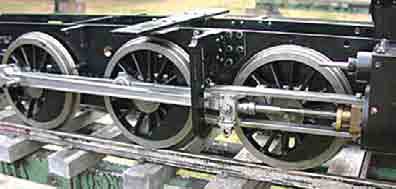Whenever there is some increase or decrease in the temperature of a body, it causes the body to expand or contract. A little consideration will show that if the body is allowed to expand or contract freely, with the rise or fall of the temperature, no stresses are induced in the body. But, if the deformation of the body is prevented, some stresses are induced in the body. Such stresses are known as thermal stresses.
The definition of the compound bar is a bar made of two or more materials with both mountedrigidly applied so that the burden can be shared and experienced the same extension @shortening. Bars compound can be categorized into two types, series and parallel bars.
Let l = Original length of the body,
t = Rise or fall of temperature,
and α = Coefficient of thermal expansion,
∴ Increase or decrease in length,
δl = l. α.t
If the ends of the body are fixed to rigid supports, so that its expansion is prevented, then compressive strain induced in the body,
εc =δ/l=l.α.t/=α.t
∴ Thermal stress, σth = εc.E = α.t.E
Notes :
1. When a body is composed of two or different materials having different coefficient of thermal expansions, then due to the rise in temperature, the material with higher coefficient of thermal expansion will be subjected to compressive stress whereas the material with low coefficient of expansion will be subjected to tensile stress.
2. When a thin tyre is shrunk on to a wheel of diameter D, its internal diameter d is a little less than the wheel diameter. When the tyre is heated, its circumferance π d will increase to π D. In this condition, it is slipped on to the wheel. When it cools, it wants to return to its original circumference π d, but the wheel if it is assumed to be rigid, prevents it from doing so.
∴ Strain, ε =(πD-πd)/πd=(D-d)/d
This strain is known as circumferential or hoop strain.
∴ Circumferential or hoop stress,
σ = E.ε =E(D-d)/d

Reference
A textbook of Machine Design by R.S.Khurmi and J.K.Gupta











Post Comment
You must be logged in to post a comment.